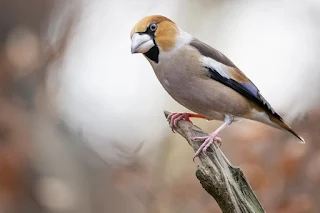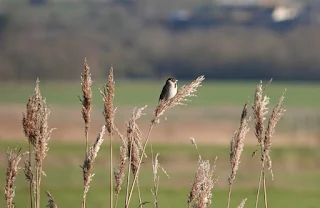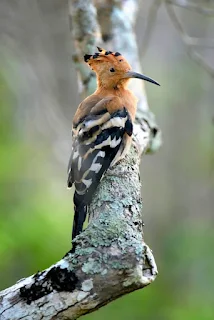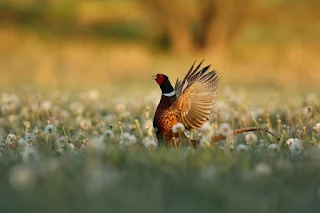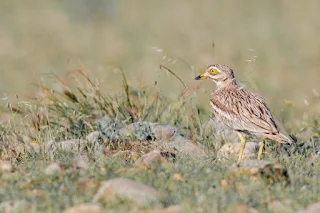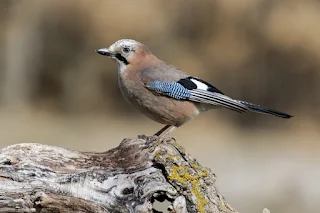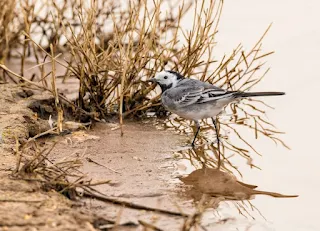European Wild Birds: Insights on Migration Patterns
Discover the awe-inspiring world of European wild birds as we delve into their migration patterns. These magnificent aerial travelers embark on incredible journeys, showcasing the wonders of nature and the importance of bird conservation in Europe.
Key Takeaways:
- European wild birds undergo remarkable migration journeys that highlight their resilience and adaptability.
- Understanding bird migration patterns is crucial for bird conservation efforts in Europe.
- Explore the diverse species of European migratory birds and their unique characteristics.
- Bird watching in Europe offers thrilling opportunities to observe these fascinating creatures in their natural habitats.
- Technological advancements have revolutionized our understanding of bird migration, contributing to conservation efforts.
The Significance of European Bird Migration
The annual migration of European birds is a true marvel of nature, captivating bird enthusiasts and scientists alike. This awe-inspiring phenomenon holds great importance not only for the birds themselves but also for the ecosystems and bird populations throughout Europe.
European bird migration plays a crucial role in maintaining the balance of different species and their habitats. As birds travel vast distances, they fulfill essential ecological functions such as seed dispersal, pollination, and controlling insect populations.
The patterns of bird migration in Europe are influenced by various factors, including geographical features, climate, food availability, and breeding cycles. These intricate migration patterns have evolved over time, allowing birds to navigate accurately and adapt to ever-changing environments.
Conservation efforts focused on European bird migration are essential for the preservation of these magnificent creatures and the ecosystems they inhabit. By understanding the factors that influence migration patterns, conservationists can better protect vital stopover sites and safeguard the birds' journey.
European bird migration is not only a breathtaking spectacle but also a testament to the resilience and adaptability of these avian travelers. It reminds us of the delicate balance of nature and the importance of our role in preserving it.
Through research and monitoring initiatives, scientists have gained valuable insights into bird migration patterns, helping to inform conservation strategies and contribute to the long-term survival of European migratory birds.
The significance of European bird migration extends beyond the scientific realm. It sparks curiosity, wonder, and a sense of appreciation for the natural world. Birdwatchers and nature enthusiasts eagerly await the arrival of migratory birds each year, seeking glimpses of colorful plumage and melodic songs.
Impact on Bird Populations
The migration of European birds has a direct impact on bird populations, shaping their abundance and distribution across different regions. The successful completion of migration journeys is crucial for breeding and the overall survival of species.
Migratory birds face a range of challenges during their journeys, including habitat loss, climate change, and predation. Understanding these challenges and their implications for bird populations is vital for effective conservation efforts.
Ecological Balance and Biodiversity
The movement of birds across Europe helps maintain ecological balance and promotes biodiversity. By facilitating the spread of seeds and pollination, migratory birds contribute to the regeneration of plant life and the diversity of flora and fauna in various habitats.
The interconnectedness of ecosystems linked on the delicate thread of bird migration. It ensures the survival of not only migratory species but also other organisms that rely on their presence for food and resources.
The Wonders of European Bird Migration
The spectacle of European bird migration is a sight to behold. Vast numbers of birds take to the skies, forming impressive flocks that stretch across the horizon. The synchronized movements, intricate flight patterns, and melodic calls leave observers in awe of the beauty and complexity of nature.
Migratory birds can cover staggering distances, navigating across mountains, seas, and deserts. Their ability to find their way back to breeding grounds with astonishing accuracy has long fascinated scientists and inspired countless nature lovers.
"The sight of birds in migration is the closest we'll come to witnessing pure magic in the natural world." -John James Audubon
European bird migration is not only a testament to the ingenuity and resilience of these winged travelers but also a source of inspiration for individuals passionate about bird conservation. By understanding and appreciating the significance of bird migration, we can work together to protect the habitats and environments that sustain these incredible journeys.
Exploring the Migration Routes of European Birds
Uncover the awe-inspiring migration routes undertaken by European birds and gain a deeper appreciation for their remarkable adaptability and navigation skills. These incredible journeys showcase the resilience and beauty of European wild birds as they traverse vast distances, spanning diverse landscapes and habitats.
European bird species undertake migratory journeys that span continents, following specific routes that have been honored through generations of instinct and adaptation. From intricate detours to direct flights, birds navigate with astonishing precision, guided by a combination of internal compasses, celestial cues, and landmarks along the way.
Let's explore some of the notable migration routes of European bird species:
The East Atlantic Flyway
This migration route stretches from the Arctic regions of northern Europe, encompassing countries such as Iceland and Norway, to the southern coastlines of Africa. It is a vital route for many waterbirds, such as ducks, geese, and waders, as they journey between breeding grounds and wintering sites.
Table: Migration Routes of European Waterbirds
| Bird Species | Starting Point | Destination |
|---|---|---|
| Barnacle Goose | Arctic Circle | United Kingdom, Ireland, Netherlands |
| Bar-tailed Godwit | Scandinavia | West Africa |
| European Golden Plover | Scandinavia | West Africa |
| Common Redshank | Scandinavia | West Africa |
The Via Pontica Flyway
This migration route follows the eastern coast of the Black Sea, connecting vital stopover sites and wintering grounds for numerous bird species. From the breeding grounds in northern Europe, including Russia and Scandinavia, birds such as raptors, siskins, and warblers undertake this challenging journey towards the Mediterranean and Africa.
Table: Migration Routes of European Songbirds
| Bird Species | Starting Point | Destination |
|---|---|---|
| Honey Buzzard | Scandinavia, Russia | Africa |
| Red-breasted Flycatcher | Scandinavia, Russia | Africa |
| Common Rosefinch | Scandinavia, Russia | Africa |
| Wood Warbler | Scandinavia, Russia | Africa |
These are just a few examples of the incredible migration routes undertaken by European bird species. Each migration route presents unique challenges and opportunities for birds, shaping their behavior, feeding patterns, and interactions with other species along the way. Understanding these routes is crucial for effective bird conservation and habitat preservation efforts.
“Migration is a testament to the indomitable spirit of European birds, as they navigate across vast landscapes and overcome countless obstacles to complete their journeys.”
By exploring and safeguarding the migration routes of European birds, we can help ensure their survival and maintain the delicate balance of ecosystems. Join us in the next section as we embark on a thrilling bird-watching adventure in Europe, discovering the best locations for observing these incredible avian travelers in their natural habitats.
Bird Watching in Europe: A Thrilling Adventure
Embark on a thrilling bird-watching adventure in Europe and immerse yourself in the beauty of the European birding experience. Whether you are a seasoned birdwatcher or a beginner, Europe offers a treasure trove of opportunities to observe a diverse range of wild bird species in their natural habitats.
For those seeking the ultimate wild bird watching experience, Europe boasts numerous locations and hotspots renowned for their abundant bird populations and breathtaking scenery. From coastal regions teeming with waterbirds to lush forests resonating with birdsong, there is something for every bird enthusiast.
Here are some top destinations in Europe for bird watching:
- 1. The Danube Delta, Romania: This UNESCO World Heritage Site is a haven for birdlife, with over 300 bird species including pelicans, herons, and eagles. Explore the marshes, lakes, and canals, and witness spectacular avian displays.
- 2. The Algarve, Portugal: Known for its stunning coastline and diverse habitats, the Algarve is home to a wide range of bird species, including flamingos, spoonbills, and warblers. Discover the wonders of Ria Formosa Natural Park and Sagres Peninsula.
- 3. The Scottish Highlands, United Kingdom: Experience the rugged beauty of the Scottish Highlands while observing iconic bird species such as golden eagles, shearwaters, and ospreys. Explore the Cairngorms National Park and the Isle of Skye.
- 4. The Camargue, France: Located in the Rhone River delta, the Camargue is recognized as one of Europe's most important wetland areas. Get up close to pink flamingos, herons, and a variety of waterfowl in this captivating region.
- 5. The Białowieża Forest, Poland: Explore one of Europe's last primeval forests and discover an array of bird species, including the elusive European bison. Immerse yourself in the tranquility of nature and experience the unique biodiversity of the region.
When engaging in bird watching, it's essential to be mindful of the birds' well-being and observe from a distance. Here are some tips to enhance your birding experience:
- Carry binoculars or a spotting scope to get a closer look at the birds without disturbing their natural behavior.
- Dress in muted colors and avoid sudden movements to blend into the surroundings and minimize disturbance.
- Respect protected areas and follow any guidelines or restrictions in place to ensure the conservation of bird habitats.
- Join guided bird tours led by knowledgeable experts who can provide insights into bird behavior and help identify different species.
- Keep a bird journal or take photographs to document your sightings and contribute to citizen science efforts.
Now, grab your binoculars and embark on a memorable bird-watching adventure in Europe. Immerse yourself in the sights and sounds of nature and witness the beauty of European wild birds in their natural habitats.
Conservation Efforts for European Migratory Birds
Conservation efforts play a crucial role in protecting and preserving European migratory birds. These remarkable avian travelers face numerous challenges during their migrations, including habitat loss, climate change, and natural hazards. To ensure their survival, initiatives and measures are being implemented across Europe to safeguard these vulnerable species.
One such initiative is the establishment of protected areas and habitats specifically designed to support migratory birds. These areas provide essential stopover points and nesting grounds, allowing birds to rest, refuel, and breed along their migration routes. By conserving these habitats, we create safe havens that enable birds to complete their long and arduous journeys.
"Conservation is the key to securing the future of European migratory birds. By protecting their habitats and ensuring their safety during migration, we can help maintain healthy populations and preserve the extraordinary beauty of these birds."
Collaborative efforts between governments, conservation organizations, and local communities are also crucial in bird conservation. These partnerships work together to raise awareness, implement conservation plans, and enforce regulations that protect migratory birds and their habitats. By engaging the community and educating the public about the importance of bird conservation, we can foster a collective commitment to safeguarding these magnificent creatures.
You too can contribute to bird conservation in Europe. Here are some ways you can make a difference:
- Support bird-friendly practices: Create bird-friendly gardens by planting native vegetation, providing food sources, and offering clean water. Avoid using pesticides and ensure that your property is safe from potential hazards.
- Get involved in citizen science: Participate in bird monitoring programs, such as bird counts or migration tracking projects. Your observations can provide valuable data to researchers and help inform conservation efforts.
- Support conservation organizations: Donate to reputable organizations that focus on bird conservation. Your contribution can fund important research, habitat restoration, and advocacy efforts.
Remember, every action counts when it comes to the conservation of European migratory birds. By working together and taking steps to protect these remarkable creatures, we can ensure their continued presence and contribute to the preservation of Europe's rich avian biodiversity.
Bird Species of European Migration
Dive into the rich diversity of bird species that undertake migration in Europe. Explore the different families and species of European migratory birds, from majestic raptors to delicate songbirds. Learn about their unique characteristics, habitats, and migration patterns. Discover how these remarkable birds adapt to their changing environments as they embark on their migratory journeys across Europe.
European migratory birds belong to various families, each with its own distinctive traits. Let's take a closer look at some of the fascinating bird species that grace Europe's skies during migration:
Raptors
European raptors, also known as birds of prey, dominate the skies with their exceptional hunting skills and commanding presence. These magnificent birds encompass a wide range of species and include the iconic:
- Peregrine Falcon (Falco peregrinus): Known as the fastest bird in the world, the Peregrine Falcon can reach speeds of over 240 miles per hour during its migratory flights. These impressive falcons breed in northern Europe and travel to southern regions during winter.
- Osprey (Pandion haliaetus): Often found near coastal areas, Ospreys undertake long-distance migrations from Europe to Africa. These skilled fishermen are known for their ability to dive into water to catch their prey.
- European Honey Buzzard (Pernis apivorus): Recognizable for their distinctive plumage, Honey Buzzards migrate from Europe to Africa, relying on their keen eyesight and soaring ability to locate and capture their insect prey.
Songbirds
Songbirds, also referred to as passerines, are a diverse group of small to medium-sized birds known for their melodious calls and colorful plumage. These avian performers include:
- Common Nightingale (Luscinia megarhynchos): Nightingales are renowned for their enchanting song and migrate from Africa to Europe during spring. These vocalists occupy a variety of habitats, including woodlands, gardens, and scrublands.
- European Robin (Erithacus rubecula): Known as a harbinger of spring, the European Robin undertakes seasonal migrations within Europe. With its vibrant red breast, this iconic bird is a familiar sight in gardens and parks.
- Common Chiffchaff (Phylloscopus collybita): These small and energetic warblers migrate from Africa to Europe, serenading with their repetitive "chiff-chaff" calls. They inhabit a range of habitats, such as woodlands, wetlands, and gardens.
These are just a few examples of the bird species that migrate through Europe. Each species plays a vital ecological role and contributes to the vibrant tapestry of European avifauna. Let's appreciate and protect these remarkable migrants to ensure their continued survival and the preservation of Europe's natural heritage.
| Bird Species | Migration Patterns | Preferred Habitats |
|---|---|---|
| Peregrine Falcon | Long-distance migration from northern Europe to southern regions during winter | Cliffs, open landscapes |
| Osprey | Long-distance migration from Europe to Africa | Coastal areas, lakes |
| European Honey Buzzard | Migration from Europe to Africa | Forests, woodlands |
| Common Nightingale | Migrates from Africa to Europe during spring | Woodlands, gardens, scrublands |
| European Robin | Seasonal migrations within Europe | Gardens, parks, woodlands |
| Common Chiffchaff | Migrates from Africa to Europe | Woodlands, wetlands, gardens |
The Wonders of Bird Migration in Europe
Prepare to marvel at the wonders of bird migration in Europe, where nature presents a breathtaking spectacle of avian journeys. Throughout the continent, vast flocks of waterbirds take to the skies, forming mesmerizing patterns against the backdrop of pristine landscapes. From elegant swans to graceful geese, these migratory birds follow their well-established routes, crossing borders and overcoming obstacles along the way.
As the seasons change, Europe becomes a playground for impressive aerial displays by birds of prey. Majestic raptors soar high above the land, showcasing their agility and strength as they search for prey. Witness the thrilling sight of these birds mastering the air currents, their keen eyes always scanning the ground below.
The migration seasons in Europe offer a unique opportunity to witness the resilience of European wild birds. It is a testament to their innate navigational skills and adaptability as they traverse vast distances, overcoming natural barriers such as mountains, rivers, and even treacherous weather conditions.
During this incredible phenomenon, birdwatchers and nature enthusiasts alike are treated to awe-inspiring scenes of thousands, if not millions, of birds in motion. Imagine the sight of a massive flock of storks filling the sky as they embark on their long journey southward, or the delicate melody of songbirds resounding through the forests as they prepare for their annual migration.
European wild birds inspire us with their determination and resilience, reminding us of the importance of nature conservation. By protecting their habitats and promoting sustainable practices, we can ensure the continued presence of these magnificent creatures for generations to come.
Birding Hotspots in Europe
Europe is a paradise for birdwatchers, offering a multitude of unique habitats that attract a diverse range of bird species. From the stunning coastal regions to the tranquil inland wetlands, there are numerous hotspots where you can witness spectacular bird migrations and indulge in the thrill of wild bird watching.
Here are some of the top birding hotspots in Europe:
The Camargue, France
Located along the Mediterranean coast, the Camargue is renowned for its rich biodiversity and picturesque landscapes. This wetland reserve is home to a remarkable array of waterbirds, including flamingos, herons, and terns. Grab your binoculars and explore the diverse bird species that thrive in this stunning region.
The Danube Delta, Romania
Immerse yourself in the breathtaking beauty of the Danube Delta, a UNESCO World Heritage site. This vast wetland is a haven for migratory birds, with over 300 species passing through during their journeys. From pelicans to eagles, the Danube Delta offers unrivaled opportunities to observe and photograph European wild birds in their natural habitat.
The Burren, Ireland
Step into the unique limestone landscape of the Burren in Ireland, where you can witness the mesmerizing displays of breeding seabirds. The rugged cliffs provide nesting sites for shearwaters, guillemots, and razorbills. Explore the cliffs and coastal areas, and let the sights and sounds of these intriguing avian species captivate your senses.
The Ebro Delta, Spain
Discover the Ebro Delta, a paradise for both birdwatchers and nature enthusiasts. This Mediterranean wetland is home to an abundance of waterfowl, wading birds, and raptors. From spoonbills to marsh harriers, the Ebro Delta offers a thrilling experience for bird enthusiasts seeking to witness the wonders of European bird migration.
These are just a few examples of the many birding hotspots that Europe has to offer. Each region boasts its own unique charm and attracts a different set of bird species. Whether you're an avid birder or a nature lover looking for a memorable experience, birding in Europe is sure to leave you awestruck.
The Role of Technology in Bird Migration Research
Advancements in technology have revolutionized our understanding of bird migration patterns in Europe, providing valuable insights into this remarkable phenomenon. Scientists employ various tools and techniques to track and monitor bird movements, enabling them to unravel the mysteries of avian navigation and behavior.
One such technology is the use of satellite telemetry, which involves attaching lightweight tracking devices to birds. These devices collect data on the birds' locations, migration routes, and migration duration, helping researchers map their movements across vast distances.
In addition to satellite telemetry, radar and weather surveillance systems aid in the study of bird migration. Weather radar can detect bird movements, revealing patterns and concentrations of migrating flocks. This information assists scientists in determining peak migration periods, important stopover sites, and potential conservation areas.
The analysis of stable isotopes, another technological advancement, provides insights into the origins and destinations of migratory birds. By analyzing isotopic compositions found in feathers and blood samples, researchers can identify the specific regions where birds breed and winter, further enhancing our understanding of migration patterns.
Remote sensing technologies, such as satellite imagery and drones, are also valuable tools in bird migration research. These technologies enable scientists to observe large-scale patterns of habitat use, detect changes in land cover, and identify critical stopover sites and migration corridors.
The integration of these technological advancements has significantly contributed to our knowledge of bird migration patterns in Europe. By combining data from various sources and employing sophisticated analytical methods, scientists can identify conservation priorities, monitor population trends, and develop effective conservation strategies.
Tracking Technology Comparison:
| Tracking Technology | Advantages | Limitations |
|---|---|---|
| Satellite Telemetry | Provides accurate and real-time data on bird movements | Expensive to implement and limited battery life of tracking devices |
| Radar Systems | Allows for large-scale monitoring of bird migration patterns | Cannot identify individual bird species or provide precise location data |
| Isotopic Analysis | Reveals information about bird origins and wintering grounds | Requires capturing and sampling birds, which can be challenging and potentially harmful |
| Remote Sensing | Provides insights into habitat use and changes in land cover | Depend on weather conditions and limited spatial resolution |
Implications for Bird Conservation and Future Research
Understanding the migration patterns of birds in Europe has significant implications for bird conservation efforts in the region. The knowledge gained from research on bird migration can inform conservation strategies and contribute to the preservation of European wild bird populations.
By studying the routes and timing of bird migration, researchers can identify critical stopover sites and habitats that are crucial for birds during their journeys. This information can help prioritize conservation efforts, ensuring the protection and restoration of these essential areas.
Furthermore, understanding bird migration patterns can shed light on the threats and challenges faced by migratory birds. Factors such as habitat loss, climate change, and the impact of human activities along migration routes can have detrimental effects on bird populations. By identifying and mitigating these threats, conservationists can work towards ensuring the long-term survival of migratory birds in Europe.
Future research in bird migration holds great promise for further enhancing bird conservation efforts. Advances in tracking technology, such as satellite tracking and geolocators, enable researchers to gather more precise and detailed data on bird movements. This data can help unravel the mysteries of migration, uncovering the factors that influence migration patterns and aiding in the development of targeted conservation strategies.
Quote:
"Understanding the intricacies of bird migration is essential for their conservation. By studying their routes and behaviors, we gain invaluable insights that can guide conservation efforts and protect these magnificent creatures for generations to come." - Dr. Maria Lopez, Ornithologist
Continued monitoring and conservation efforts are crucial in ensuring the long-term sustainability of bird populations in Europe. By integrating scientific research, policy-making, and public engagement, we can work towards a future where birds thrive and continue their remarkable migrations across the continent.
Conclusion
In conclusion, the migration of European wild birds is a remarkable phenomenon that showcases the beauty and resilience of nature. Every year, millions of birds embark on incredible journeys, crossing vast distances and overcoming numerous challenges in their quest for survival.
By understanding and appreciating the patterns and challenges of bird migration, we can contribute to their conservation and ensure the continued presence of these magnificent birds in Europe's skies. It is crucial to recognize the interconnectedness of ecosystems and the importance of preserving habitats along the migration routes.
Embarking on a European birding adventure is a thrilling experience that allows us to witness the wonders of migration firsthand. From the stunning coastal regions to the serene inland wetlands, Europe offers abundant opportunities for wild bird watching. It is an opportunity to observe a diverse array of bird species in their natural habitats and marvel at their awe-inspiring flights and behaviors.
Let us embrace the adventure and become advocates for bird conservation in Europe. Our collective efforts can make a difference in protecting and preserving the rich birdlife heritage of Europe for future generations to appreciate and enjoy.
FAQ
What is bird migration?
Bird migration refers to the annual movement of birds from one region to another, typically for the purpose of breeding, feeding, or escaping unfavorable weather conditions. It is a remarkable phenomenon observed in many bird species worldwide.
Why do birds migrate?
Birds migrate for various reasons, including the search for food, suitable breeding grounds, and favorable weather conditions. Some species migrate to take advantage of abundant resources in different locations during specific seasons.
How do birds navigate during migration?
Birds navigate during migration using a combination of celestial cues, such as the positions of the sun and stars, as well as geomagnetic cues. They also rely on their keen senses of sight and memory to follow traditional migration routes.
Which bird species migrate in Europe?
Europe is home to a wide range of bird species that undertake migratory journeys. Some notable migratory species in Europe include swallows, storks, warblers, ducks, geese, and raptors like ospreys and golden eagles.
Where are the best locations for bird watching in Europe?
Europe offers numerous birding hotspots for enthusiasts. Some popular locations include the Camargue in France, the Białowieża Forest in Poland, the Danube Delta in Romania, the Strait of Gibraltar, and the Wadden Sea in the Netherlands, among others.
How can I contribute to bird conservation in Europe?
There are several ways to contribute to bird conservation in Europe. You can support local conservation organizations, participate in citizen science projects, promote habitat preservation, advocate for bird-friendly policies, and reduce your own environmental impact.
What role does technology play in bird migration research?
Technology has revolutionized bird migration research by providing tools for tracking and monitoring bird movements. Techniques such as satellite telemetry, geolocators, and radar systems allow scientists to gather valuable data on migration patterns, routes, and stopover locations.
Why is bird migration important for conservation?
Bird migration is crucial for conservation efforts because it helps identify important habitats, migration corridors, and stopover sites that require protection. Understanding migration patterns is essential for implementing effective conservation strategies that safeguard bird populations and their habitats.
What are the implications of bird migration research for future conservation efforts?
Bird migration research provides critical insights into the behavior, ecology, and population dynamics of migratory bird species. This knowledge can inform conservation efforts by identifying threats, designing protected areas, and guiding international collaborations to ensure the long-term survival of migratory birds.
How can I get involved in bird watching and bird conservation in Europe?
You can get involved in bird watching and bird conservation in Europe by joining local birding groups, participating in guided bird walks or tours, supporting bird sanctuaries and nature reserves, and learning about the unique characteristics and needs of bird species in your region.
Where can I find more information about bird migration in Europe?
For more information about bird migration in Europe, you can refer to reputable birding guides, field identification books, scientific research papers, conservation websites, and online platforms dedicated to bird watching and ornithology
